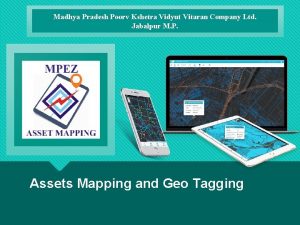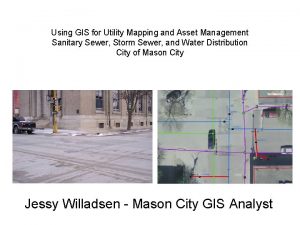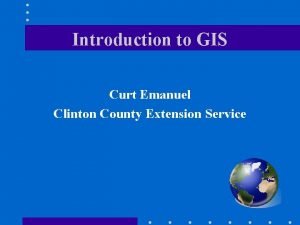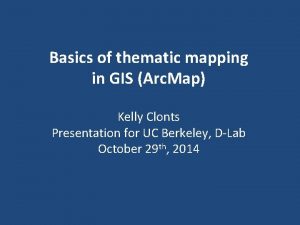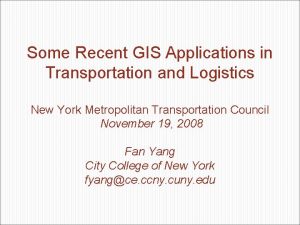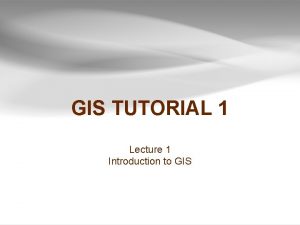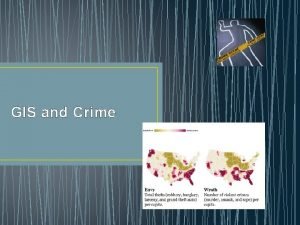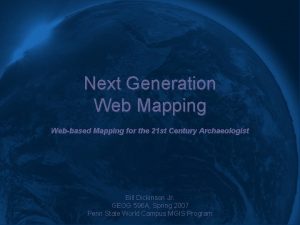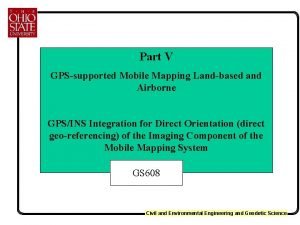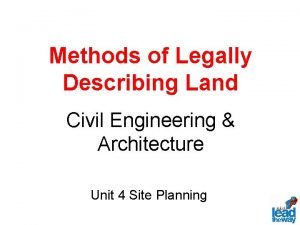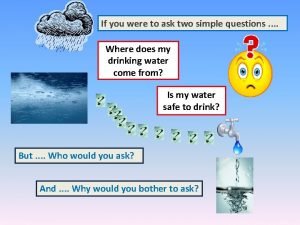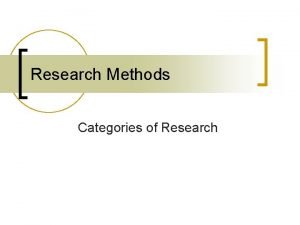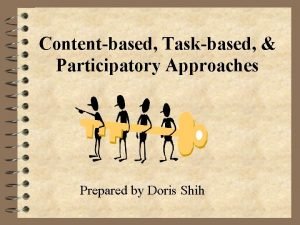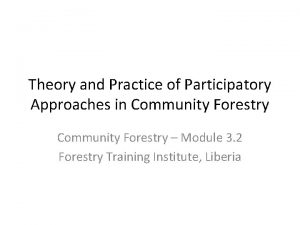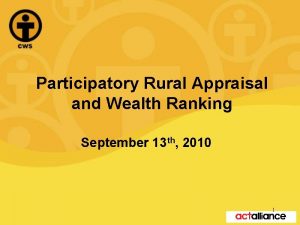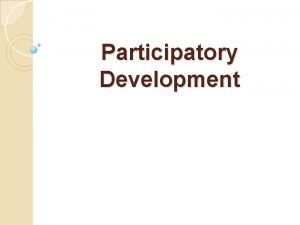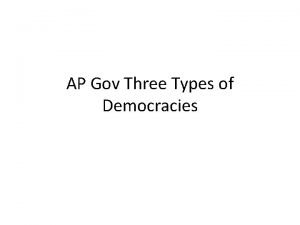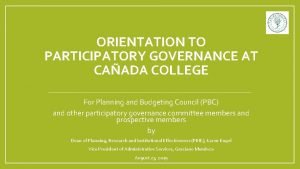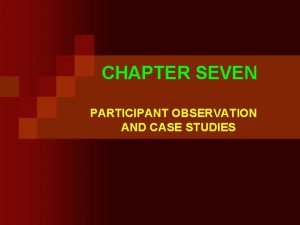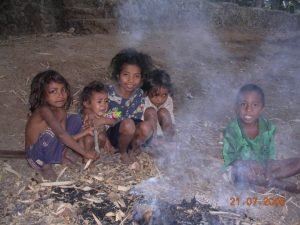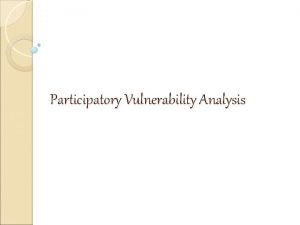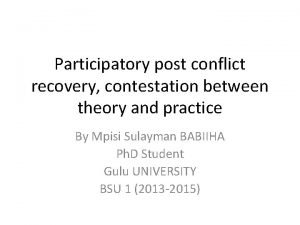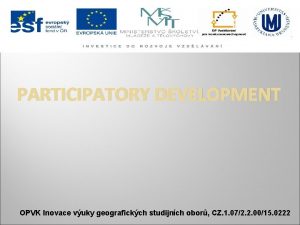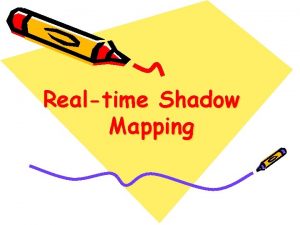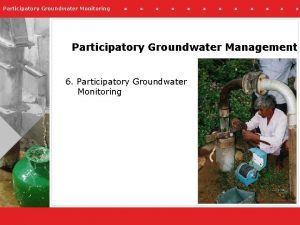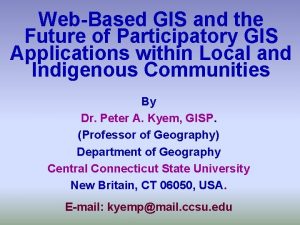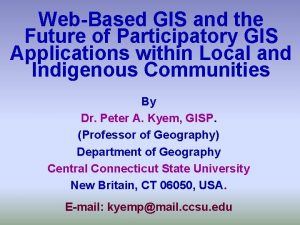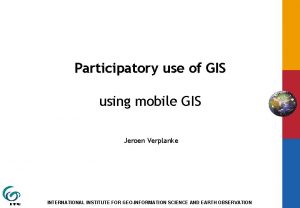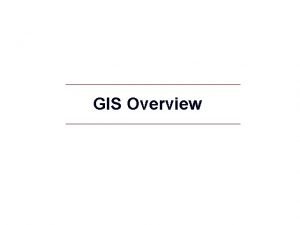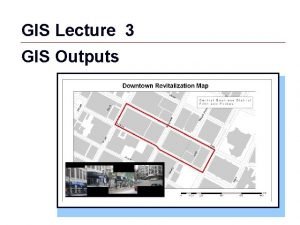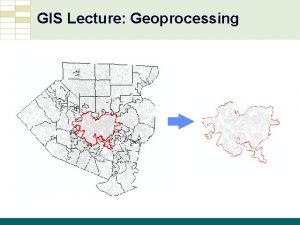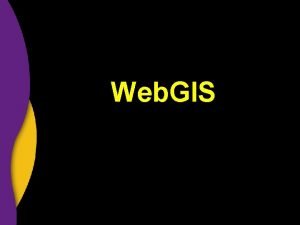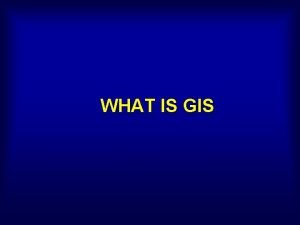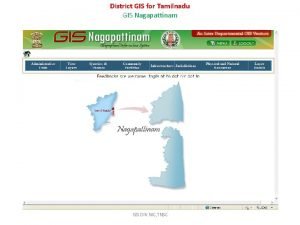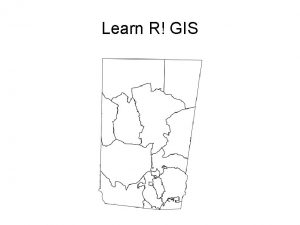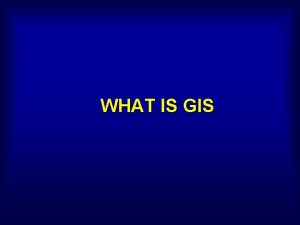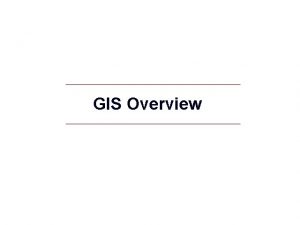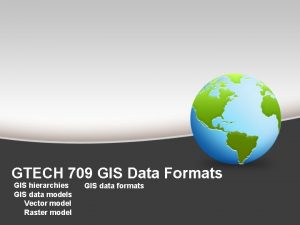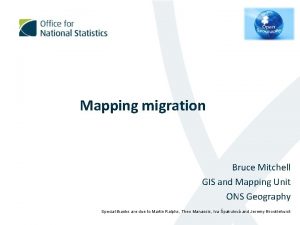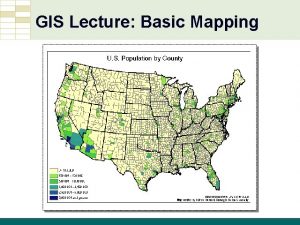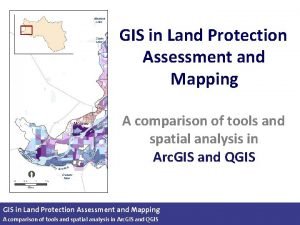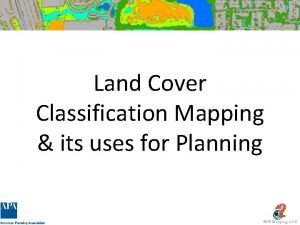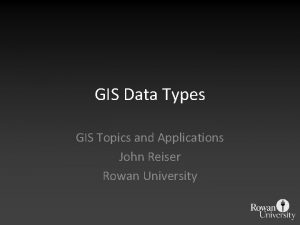Participatory GIS Participatory Mapping Uses and Applications Land


































- Slides: 34

Participatory GIS & Participatory Mapping – Uses and Applications: Land & Resource Claims Community NRM & Local Planning Promoting Equity Conflict Management Cultural Historical Identity 1 PGM Department

P-GIS Applications v Claiming land resource rights & entitlements, v Community management (& planning) of lands & NR, v Promoting equity (ethnicity, culture, gender, environmental justice, etc. ), v Conflict management (amongst communities, between communities & higher-level forces), v Cultural historical identity building & awareness. 2 PGM Department

´Claiming Our Land´ - Demarcating Customary Lands & Traditional Boundaries Identify areas of Use and Occupancy Priorities for Claims Evaluation of Scenarios – of alternative land management Prep. for Court Procedures – rigour, accuracy, appearance 3 PGM Department

GIS & Maps in Land Claims “A map is likely to enhance a court’s understanding, synthesis, and resolution of a land dispute” “GIS [is] a useful tool in bridging the gap between traditional landscape images and the demand formal cartographic representations of land necessary for land claim negotiation. ” “the key text for modern states to take over resource tenure is the map” 4 PGM Department

Maps and Land Titling - a Warning “ . . mapping of land titling oversimplifies overlapping claims from different family members and reduces them to simplistic 2 -D space of ‘household title’ – leads to exclusion, dispossession, & conflicts” (Ganjanapan 1994) 5 PGM Department

Respect for People’s Land Rights Concepts of Land ISK as symbolic, emotional, and visionary knowledge – Cultural, historical, & spiritual values of land. Land in the stewardship of people. Land determines activity spaces and responsibility spaces. 6 PGM Department

Representing land tenure Customary Land Tenure System e. g. Aboriginal Australia 7 Market-oriented Land Tenure e. g. Australian Cadastral System Spiritual physical connection to land Land as a marketable commodity Communal Ownership. Stewardship. Register land with cadastre. Exclusive ownership. Land transferred through inheritance Transfer land sale, lease, inheritance. Evidence tenure via song, dance, stories, pictures, ceremony – ‘incorporating’ Written Records by Certificate of Title granted by state. Long-term ‘inscribed’ storage in databases. Boundaries are ‘limits of influence’ topography, sacred spaces. Boundaries geodetic, demarcated by monuments. State regulation. Overlapping rights, responsibilities, negotiate with neighbour peoples Rights on neighbouring lands restricted & controlled by the State Soft boundaries Hard boundaries Temporary/Seasonally flexible bound Mostly fixed boundaries Richer Meanings – holistic GIS cannot handle – Maybe PGIS Preciser meanings - reductionist PGM Department

ISK / ITK - Indigenous (Spatial) Technical Knowledge IK and scientific knowledge are not always so different. ITK/ISK maybe more accurate because embodies generations of practical knowledge, and works in interactive, holistic systems. Examples: Interpret satellite images of land capability with Bedu shepherds Jordan (Patrick 2002); ITK of grazing lands in Burkina Faso (Sedogo 2002); Australia: mapping ITK of valuable vegetation types Senegal River valley: comparison farmers’ & scientific soil classifications (Tabor & Hutchinson 1994); 8 PGM Department

9 PGM Department

10 PGM Department

11 PGM Department

Mapping Local Urban Resources 12 PGM Department

Equity & Legitimacy - Gendered Space Spatial knowledge is a form of power over space and power over behaviour. Gendered spaces are different in character and value and use. Women’s space may be very restricted (due to culture, or danger) Women’s space may not be visible, nor easily transferable to GIS 13 PGM Department

14 PGM Department

15 PGM Department

16 PGM Department

Poverty & Conservation Sketch Map, Mali village 17 PGM Department

Children´s Map of Beacon Park 18 PGM Department

P-GIS in Conflict Management Conflict mapping Fuzzy and flexible boundaries, Conflicts over land, land resources, access to resources, ownership of resources, Or, conflicts between different forms of ownership or entitlements Counter mapping 19 PGM Department

20 PGM Department

21 PGM Department

22 PGM Department

Cultural-Historical Identity > Building the Community - Promote Community awareness - Cultural Historical Knowledge > local history - Community development of GIS strengthened Ifugao historical cultural consciousness and prepared for negotiations. - Sacred Lands - Land for the Ancestors 23 PGM Department

24 PGM Department

Mental Maps – Los Angeles white elite, black, hispanic 25 PGM Department

Rosario, Argentina 26 PGM Department

Community Green Map, James Bay 27 PGM Department

Bostonian´s Image 28 PGM Department

New Yorker´s Image of the USA 29 PGM Department

Jefferson City - watersheds 30 PGM Department

Ownership of Spatial Data o gathering, hunting, fishing, grazing, woodfuel o waterholes. o boundaries of culture areas, clans, tribes. o customary property demarcations within a cultural boundary, e. g. by clan, lineage, household, o historic places o ancestral grounds, sacred areas, buried art o indigenous place names, cosmological (creation) locations. 31 PGM Department

Maori Indigenous Values of Land (Harmsworth) 32 PGM Department

How is Ownership protected? o concealed files linked to GIS o overlay only at a crude scale o hyperlink to an accepted authority figure 33 PGM Department

Questions of ownership (Rambaldi) Who decides on what is “important”? Who owns l l l the pictorial language, its graphic vocabulary and the resulting message? Who owns the Legend? 34 PGM Department
 Mpezgeo
Mpezgeo Utility mapping using gis
Utility mapping using gis Clinton county gis
Clinton county gis +gis +creator +thematic
+gis +creator +thematic Gis applications in transportation
Gis applications in transportation Gis applications in civil engineering
Gis applications in civil engineering Memory parameters
Memory parameters Forward mapping vs backward mapping
Forward mapping vs backward mapping Transform mapping dan transaction mapping
Transform mapping dan transaction mapping Crimegis
Crimegis Web based mapping
Web based mapping Land-based mobile mapping
Land-based mobile mapping Tom cortina
Tom cortina An area of land largely enclosed by higher land
An area of land largely enclosed by higher land What are landforms
What are landforms Business application in computer network
Business application in computer network The method of describing land that uses degrees
The method of describing land that uses degrees Land uses
Land uses Objectives of a research paper
Objectives of a research paper Pla tools
Pla tools Content based task based and participatory approaches
Content based task based and participatory approaches Disadvantage of participatory planning approach
Disadvantage of participatory planning approach Pra definition
Pra definition Participatory rural appraisal
Participatory rural appraisal Participatory development
Participatory development Participatory budgeting
Participatory budgeting Participatory approach in development communication
Participatory approach in development communication Participatory evaluation
Participatory evaluation Participatory democracy definition ap gov
Participatory democracy definition ap gov Participatory governance
Participatory governance Participant observation
Participant observation Pengertian participatory action research
Pengertian participatory action research Participatory vulnerability analysis
Participatory vulnerability analysis What is participatory development
What is participatory development What is participatory development
What is participatory development
